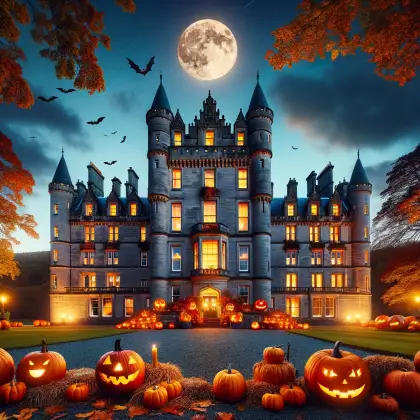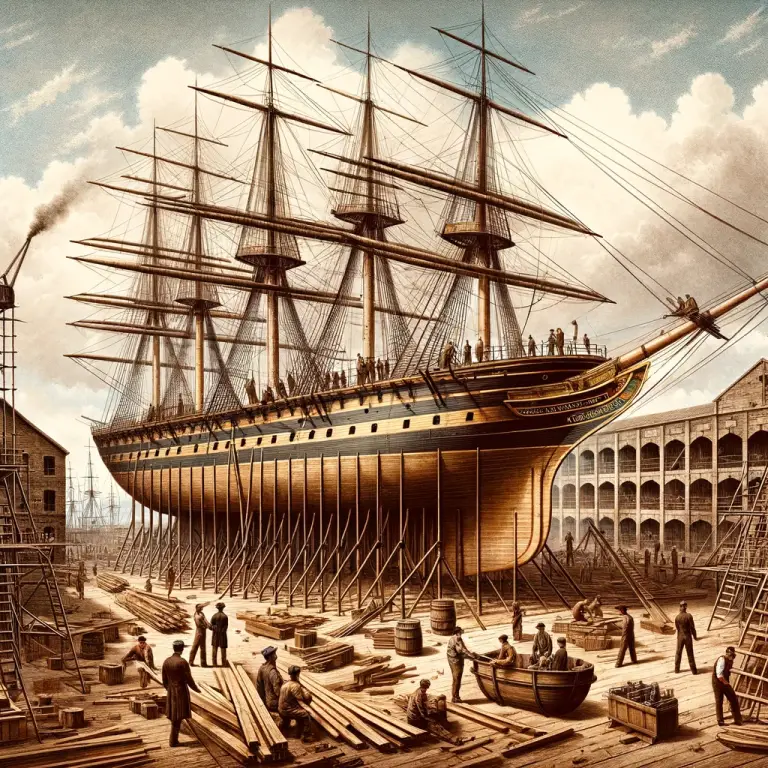Queen Victoria and Albert first came to Scotland in 1842. Balmoral was to become the home from home, and Halloween at Balmoral would become an event with preparations like Christmas.
The Queen’s Halloween was an event at Balmoral Castle for many years. Preparations for the event were as big as preparing for Christmas with the same level of anticipation. It was much loved and looked forward to the event, not only for the royal family but also for their staff, farmers and locals of all classes.
Initial interest came in 1866 when the Queen was out visiting her head gamekeeper’s mother whom she had tea with. Victoria saw locals building fires carrying torches and children getting involved. Her journal notes the pretty effect”. The Queen and children repeated the Halloween get-together as the queen noted in 1866. Torches and fires dancing and music.
Largest Halloween Bonfire at Balmoral
A large bonfire was lit at the front of Balmoral Castle, they carried torches, and a procession started. Many staff often 100 would carry lit torches and follow the Queen’s open carriage which also carried a lit torch. They paraded an effigy of a witch around in a cart called the “Shandry dann”, by attendants dressed up as ghouls goblins. They then presented or tossed the witch to slaughter on the bonfire. Music dancing contributions from the Queen’s pipers.
The Queen’s fascination with the legends and folklore of Halloween.
It interested the Queen in the phenomenon of Witches and other esoteric or cultural traditions. At the time there was some criticism towards the Queen that as head of the Church of England and the British Empire, it was not appropriate for her to be also a consort to the beliefs about demons, spirits, and witches that compromised Christian Values
Bury and Norwich’s post-1879 11 Nov article heavily accused the queen of fostering rather than abating superstition. An effigy that looked like Gladstone who the Queen didn’t particularly like got let out of the bag so that gave her more bad press.
Other grumblings were that the queen spent too long in Scotland at Balmoral people thought she should be back in London, the press played on this.
The Queens Halloween Diary at Balmoral
1873
Prince Leopold unwell had a bed moved towards a room with a window to watch the Halloween festivities.
1874
In the 1877 diary entry, the queen describes hurrying back from an outing so that she could be in time for the Parade. Princess Louise walking with a torch reminded the Queen of a witch from Shakespeare’s Macbeth.
1881
The Dundee Advertiser, Burning of the Witch got sinister reviews because Princess Beatrice was seen to be joining in lighting fires that set light to a stuffed effigy of a witch.
1882
A re-enactment of a local Witch legend to do with witches Rock was performed for Queen Victoria with some organisation by John Brown. It revived the story since it happened near Balmoral.
The witch in question was a French lady, Jane Guisset. She worked and served the Laird of Abergeldie at Abergeldie Castle end of the 1500s. Natives called her Caitir Fraugach, nicknamed Katie Frankie, Kitty, Rankie, Rankine even French Kate.
Perceived to be a witch they thought she had drowned the Laird of Abergeldie, he was a ladies’ man who two-timed lovers. They observed this French so-called Witch to have psychic powers. Her mistress asked the French witch to tell her about her Husband’s activities. Unfortunately, the French Witch told her mistress about the infidelity of the Laird and showed her an image in her crystal ball as it was proving it. In disbelief and anger at seeing what the witch was saying was true, the mistress instructed Caitir to set about sinking the ship the Laird was on which was heading towards Scotland.
This French witch went to the highest point in the castle carrying with her a box with water and a tiny model of a ship, she then headed down to the lowest point of the castle in the cellars and dungeons. Her so-called magic was set in motion, the model ship started to sink. The room is forever known as Katie Frankie’s Hole. Sure as her word the real-life Laird and his ship sank, and it killed him. The Lady of the castle turned in the witch to the authorities. They burned her to death in 1603 at Witches Rock, the traditional name, Creag –nam-ban. A jagged rock some 500 meters in height with strong winds, a howl which folklore seals as the French witch’s screams.
Of course, Queen Victoria’s performance involved the effigy of a witch drawn along in a cart and burnt on a Huge bonfire which spared them from scaling a rock and dealing with high wind speeds.
Albert and Victoria bought the Haunted Abergeldie castle for a spell
Prince Albert bought Abergeldie Castle on a 40-year lease as it was near to Balmoral Castle. Albert gave the castle to his son Bertie but eventually in later life the Queen took it back from him.
John Brown died in 1883 and so too did her diary entries about Halloween.
Royal Rituals and Community Spirits
Beyond the grandeur of torchlit processions and effigy burnings, Halloween at Balmoral was a time for strengthening community bonds. The Queen, known for her sense of duty and affection for her Scottish retreat, saw these festivities as a bridge between the royal household and the local populace. The castle grounds would echo with laughter and shared tales, as all ranks mingled freely, united by the spell of the season. It was a night when the hierarchy was cloaked by the darkness, only to be illuminated by the joy of collective celebration.
Cultural Critique and Royal Defiance
The Queen’s indulgence in Halloween traditions occasionally drew sharp breaths from the upper echelons of British society. Eyebrows raised at the sight of monarchy mingling with mysticism, Victoria’s participation in Halloween was a subtle rebellion against the rigid expectations of her role. Despite criticisms, she championed the value of cultural heritage, demonstrating a willingness to look beyond the crown and connect with deeper human experiences.
Legacy of Halloween at Balmoral
The echoes of Halloween celebrations under Queen Victoria’s reign have left an indelible mark on the cultural fabric of Balmoral and its surrounding communities. The vivid descriptions from her diaries allow historians and enthusiasts alike to reconstruct the festive fervour that once graced the castle’s stony silhouette. These historical accounts preserve not just the memory of rituals past but also the spirit of inclusivity and curiosity that the Queen herself embodied. Through these written words, the Halloween at Balmoral remains a living tradition, inspiring generations to explore and appreciate the rich tapestry of Scottish folklore and royal history.




